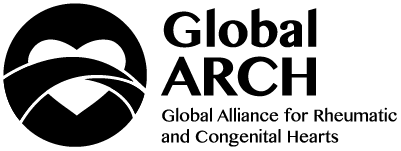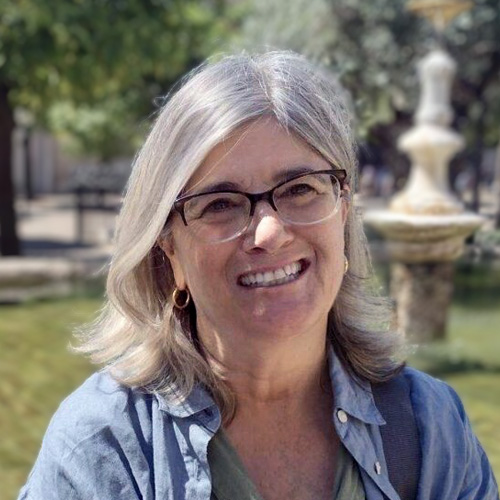
Finding My Purpose in Health Advocacy: Anu Gomanju’s Rheumatic Heart Disease Story
I was diagnosed with rheumatic heart disease in 2001 when I was 11 years old. After a bout of tonsillitis, I started to experience symptoms of rheumatic fever. The sore throat from the tonsillitis turned to chest pain, joint pain, chronic fatigue, shortness of breath, increased heart rate, and swollen hands and feet.

I developed rheumatic fever which eventually damaged my heart valves because I did not consistently take my medicine for the tonsillitis. I didn’t like the taste and I didn’t understand the consequences of not taking the medicines regularly. Rheumatic fever can be a result of throat infections that are not properly treated, and rheumatic heart disease is a result of the inflammation and scarring of the heart valves that is caused by rheumatic fever.
I was referred to the only cardiac hospital in Nepal at the time for my first open heart surgery after my diagnosis. My damaged mitral valve had to be repaired with a ring. After that, I had to take penicillin and other medicines to control the function of the repaired valve. But around 2013, I started experiencing complications again. I felt tired and dizzy because my heart rate increased to almost 160 beats per minute, well above the normal resting heart rate of 60 to 100 beats per minute. We went to see the doctor who performed my first surgery and he told me that I needed a second open heart surgery to replace the repaired valve with a prosthetic valve. It was a scary time and I was worried that I would die. My condition was so bad that before my second surgery my heart collapsed. The doctors gave me CPR and performed cardioversion by shocking my heart to return to a regular rhythm.
Rheumatic heart disease is not the type of condition that goes away after you’re treated in a hospital. On top of the two open heart surgeries, I will have to take 4 or 5 medicines every day to manage my rheumatic heart disease for the rest of my life.
Financial burdens, logistical challenges, and social barriers

Living with RHD has impacted my family in almost every way possible. Because my physical symptoms were so bad, my academic performance was poor. I couldn’t enjoy my childhood. Emotionally, my suffering affected my parents and siblings and caused the family a lot of stress. The financial burden was significant because the surgeries were quite expensive on top of the logistical complication of the hospital being 90 minutes from home. We had no private vehicle, and the journey to the hospital required bus transfers.
The cost of my treatment was so great that my parents took a loan from our neighbors. Some people questioned my father on why he was spending so much money on my treatment because I am a girl. They would only spend so much money to treat a son.
Some people questioned my father on why he was spending so much money on my treatment because I am a girl. They would only spend so much money to treat a son.
Unfortunately, my experience is not abnormal as access to healthcare is a huge challenge for people living with NCDs in Nepal. The specialized chronic care that we need to live is primarily available in private hospitals in the capital city and the cost of NCD care is high. Rheumatic heart disease specifically is a disease of the poorest, and many people who need these services to survive are located in rural areas far from treatment centers. Traveling to the clinic can be expensive and time consuming on top of the high opportunity cost of a missed day of wages. For example, I need a monthly checkup and blood sample test as I am taking an anticoagulation drug called warfarin, as do many with my condition. These services cost 300 Nepali rupees (USD 3.30), but those who live far from the clinic often pay thousands more to get there. Many people with cardiovascular diseases including RHD have died without even knowing their condition, but they may have survived if there had been equitable access to care.
My path to becoming an NCD advocate

It was never my plan to become an NCD advocate, but my experiences – both good and bad – have led me to advocacy. Thanks to recent advocacy efforts, the price of cardiac surgery for children under 15 in Nepal is now paid for by the government. Although this benefit wasn’t available when I had my surgeries, I did receive support from a government program that provides a one-time payment of 100,000 Nepali rupees, which is about USD 755, to NCD patients. Although 100,000 rupees is not a lot when patients have to live with NCDs for their whole lives, it certainly helps with some of the financial burden. If we can expand programs like this we can provide vital support to NCD patients.
I am grateful for how I have been able to grow personally and professionally through my advocacy work. The Voices of NCDI Poverty Advocacy Fellowship has been a rewarding opportunity for me because I finally understand that I am not alone in my experience with RHD, and I want other NCD patients to feel the same support from their peers. Our voices are so much louder when we share our experiences and collaborate with care providers and other people living with NCDs.

Before becoming an advocate, I did not know much about other severe chronic NCDs like type 1 diabetes and sickle cell disease as well as the challenges those who live with them face. From connecting with other people living with other NCDs, I realized that although we are living with different conditions, the obstacles we must overcome and the policy changes we are advocating for are very similar. By working together we have the power to redefine what people living with NCDs can contribute to health system development.
From connecting with other people living with other NCDs, I realized that although we are living with different conditions, the obstacles we must overcome and the policy changes we are advocating for are very similar. By working together we have the power to redefine what people living with NCDs can contribute to health system development.

The NCDI Poverty Advocacy Fellowship has empowered me to act as an advocate because I understand Nepalese communities and health systems. Being an MPH in global health student and a person living with RHD, I know what matters to people living with NCDs. Health inequities are a huge problem in Nepal and other developing countries. Becoming a health advocate and sharing my experience with the world has answered the questions that have plagued me since I was diagnosed as a child: Why do I have rheumatic heart disease? Why do I have to depend on medicine? What is the purpose in my life? I have found my purpose in health advocacy.
Voices of NCDI Poverty Advocacy Fellow Anu Gomanju is a global health MPH student and NCD advocate living with rheumatic heart disease (RHD) in Bhaktapur, Nepal. She has shared her experiences as a person living with an NCD and drawn attention to the needs of broader communities of people living with severe, chronic NCDs at the World Health Assembly and the World Heart Summit. You can watch Anu’s interview with the World Health Organization here.
This article was originally published on the NCDI Poverty Network website, and Global ARCH is sharing it with permission.




